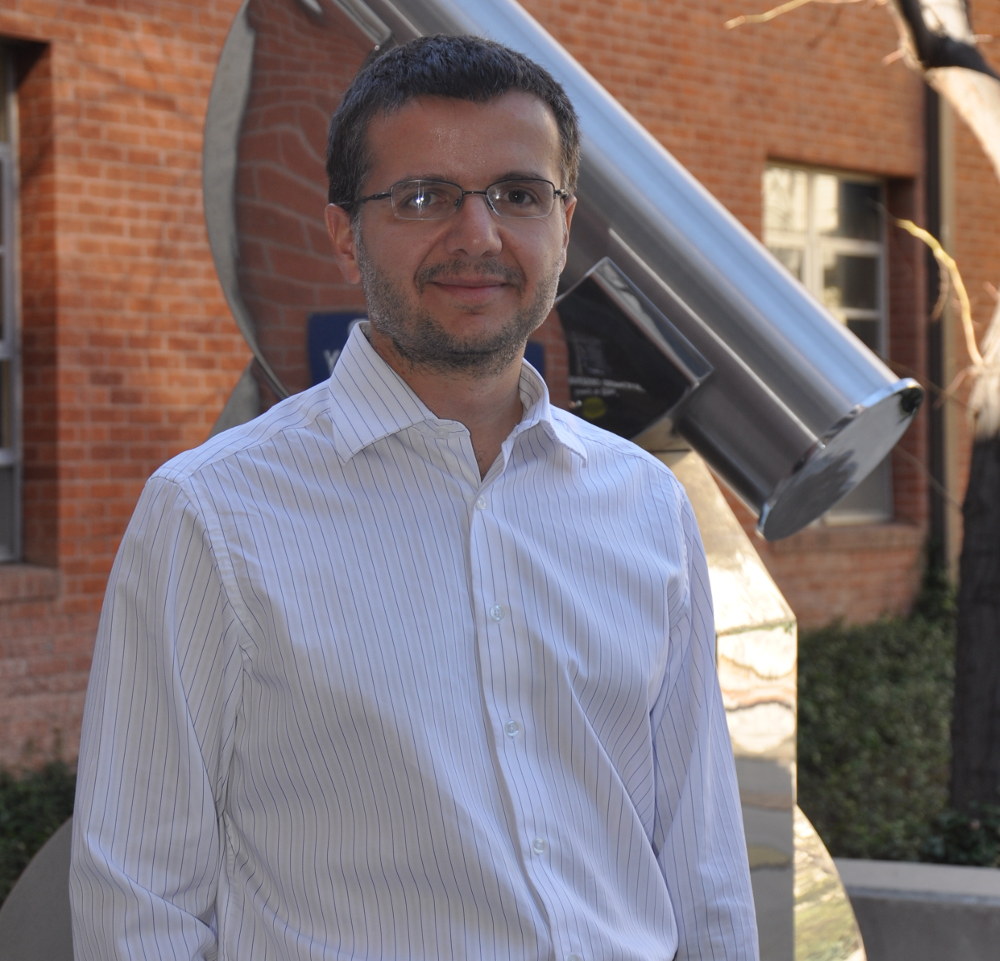
The image, which was presented to the world on Wednesday, measures a black hole which is 40 billion km across – three million times the size of the Earth – and has been described by scientists as “a monster.”
The black hole is 500 million trillion kilometers away from the earth and was photographed by a network of eight telescopes across the world, coordinated by the Event Horizon Telescope (EHT) project. The EHT is a consortium of more than 200 scientists who have been consulting on the massive project for about two decades.
Psaltis, a professor of astronomy and physics at the University of Arizona, is the EHT’s project scientist.
Born in Serres, a town in northern Greece, in 1970, he began writing scientific papers twenty years ago speculating about what it would take to photograph a black hole. The technology didn’t even exist at the time.
The EHT was envisioned as a way to change that, using the combined power of a network of radio telescopes. The researchers have linked up radio telescopes in Arizona, Spain, Mexico, Antarctica and other places around the world, forming one virtual instrument which is the size of the Earth.
The EHT team has used this “megascope” to study the two supermassive black holes for two weeklong stretches to date — once in April of 2017 and again the following year. The new imagery comes from the first week of observances.
“It’s really a confluence of everything just lining up in 2017 to be able to run this project,” Psaltis said.
There are good reasons why it’s taken two years for the project’s first result to come out. For one thing, each night of observing generated about 1 petabyte of data, resulting in such a haul that the team has to move its information from place to place the old-fashioned way.
“There’s no way that we can transfer this data through the internet,” Psaltis said. “So, what we actually do is, we take our hard drives and we FedEx them from place to place. This is much faster than any cable that you can ever find.”
The Greek astronomer studied physics at the University of Thessaloniki. He graduated in July of 1992 and started his graduate studies in the astronomy department of the University of Illinois.
In 1997, Psaltis moved to the Harvard-Smithsonian Center for Astrophysics, as a Smithsonian Postdoctoral Fellow. He continued as a postdoctoral researcher at MIT, and for two years as a long-term member at the Institute of Advanced Study, in Princeton, NJ.
In January 2003, he began work as part of the physics and astronomy faculty at the University of Arizona.
See all the latest news from Greece and the world at Greekreporter.com. Contact our newsroom to report an update or send your story, photos and videos. Follow GR on Google News and subscribe here to our daily email!





